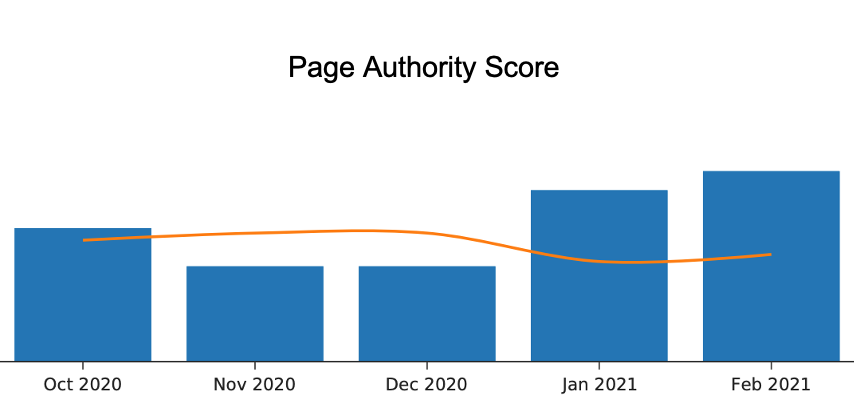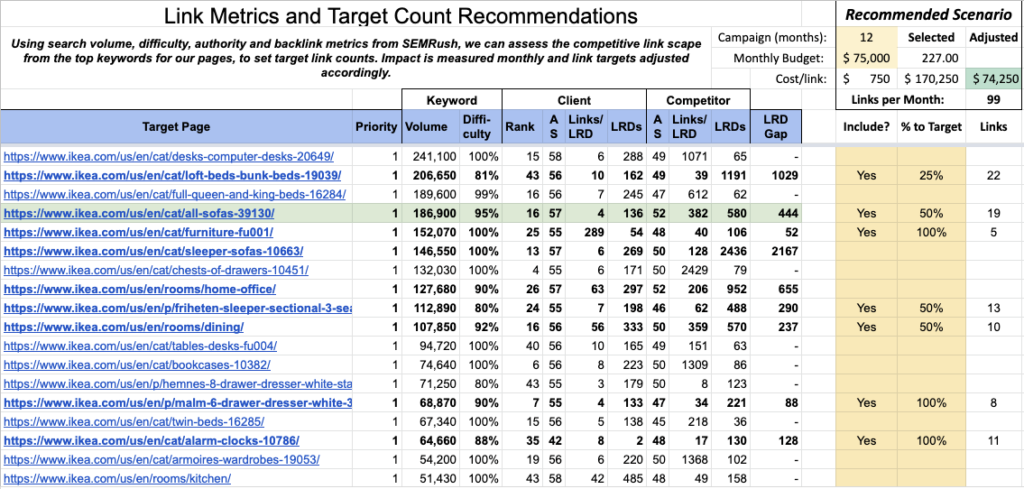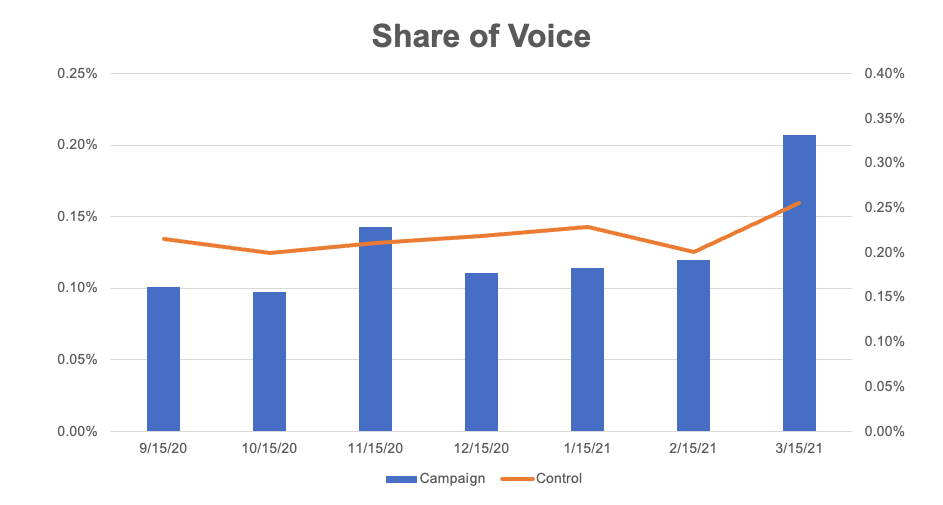Earlier this week, Garrett and I presented a 90-minute webinar that showcased a start-to-finish approach to building links to sales pages.
Hosted by SEMrush, about 500 people registered and nearly 400 watched the broadcast live on YouTube and Periscope.
Thank you to all who took time out of your day to join us, and a special thanks to SEMrush for hosting as well as for attendees who offered up their websites to be used in a live ‘lightning round’ ideation session at the end.
While Garrett has presented on this topic in the past, this webinar was very different that previous versions:
- The Linking Context Development workflow created by Garrett has been totally over-hauled;
- A new link gap analysis helps identify pages that stand to gain the most from link-building;
- The Link impact reporting highlights successes and opportunities to drive traffic and revenue.
Topic, Publisher Types for Outreach
One of the cornerstone elements of this process is Garrett’s workflow of how he ideates on how to build links to specific sales pages, develops content ideas, identifies publisher types and aligns on topics that would be most effective to use when working on outreach.
Garrett calls it: Linking Context Development.
While this is not a new process to Garrett, it certainly was to me and may be to you as well. And for those that are already familiar with it, it’s been significantly re-worked.
Here’s what it looks like mapped out:
The process centers around conducting research/ideation in key areas to prepare for content development and to determine how you’ll approach publishers.
In terms of a linear process, it looks something like this:
The process is then repeated for each research area.
The output of this exercise is 2-fold. You will generate:
- a list of publisher types and and topic ideas to use in your prospecting;
- some incredible content ideas to add to your sales pages.
What does Linking Context Development Deliver?
This workflow is designed to provide you with the following:
- a list of topics, angles, publisher types for outreach, and content ideas;
- more relevant, contextual, useful, justifiable, and natural links to your sales pages.
Other areas we covered in the webinar
In addition to Linking Context Development, we also covered our page selection methodology and discussed the tools and data we use for that process; as well as how we report to clients on the impact of their campaigns using share of voice, Page Authority Score, average rank, rank distribution, volume of ranking keywords, and more.
Link Gap Analysis
This is an area we’ve expanded into heavily over the past 12 months: identifying link-related metrics from competing pages relative to a page we’re analyzing for inclusion in a link building campaign. This helps us determine the opportunity for growth and sets expectations about how many links we’ll need in order to be competitive.
It even gives us an opportunity to forecast the ROI of a link-building campaign, which we briefly highlight in the webinar.
In the screen capture below, we see what a Link Gap Analysis looks like. Please note: no affiliation with IKEA, but Garrett and I both recently bought sofas so this topic is very top-of-mind. Also I really like the IKEA brand and their focus on sustainability, affordability, and practical design. All data displayed is from SEMrush:
Impact Reporting
This is another area we’ve expanded into over the past year+ and has made a very big difference in terms of showcasing the impact of our work.
In our client reporting, we track Share of Voice (a click-through-rate model weighted by search volume); Page Authority Score (SEMrush); average rank, rank distribution and ranking keyword count, and more. We track these metrics over time for the campaign pages and we measure against a control group of similar pages on the client’s site that are not part of the campaign.

Here’s an example of one of our charts – showing Page Authority Score for campaign pages (blue columns) measured against a control group (orange line).
This has been a tremendous benefit to us as we’re able to showcase the work we’re doing for our clients. It’s also aided our stakeholders in reporting up the ladder on their own performance in measuring the vendor relationship with us.
| January 2021 | February 2021 | March 2021 | M/M | % diff. Camp/Cont | |
| Campaign | 0.11% | 0.12% | 0.21% | 72.79% | 168.20% |
| Control | 0.23% | 0.20% | 0.26% | 27.14% |
Watching the Webinar
If you’d like to catch all the action (or at least part of it, it won’t hurt our feelings if you skip around), you can watch it on Youtube on the Semrush Live channel, or here it is embedded as well:
Here are time stamps for key sections:
- Choosing your objective: 5:23
- The [inverted] publisher pyramid: 7:10
- Page selection methodology (link gap analysis): 8:58
- Linking Context Development: 15:14
- Publisher Prospecting, Qualifying and Engagement: 37:45
- Measuring Impact: 47:30
- Attendee Site Reviews: 53:45
What’s next?
In late July we’ll be back with Semrush Live with a follow-up, where we’ll take 3 websites through the process that we outlined during this webinar in more of a turn-key fashion to give viewers a sense for how they can follow this process start-to-finish. So stay tuned for that.
Happy link building!
James
Resources for Further Exploration
As you refine your link-building workflows for sales pages, here are some tools and resources to help you:
- Link Launch Tool: Streamline your link-building campaigns and identify high-impact opportunities with Citation Labs’ innovative tool. Check it out here.
- Learn More: Explore advanced link-building strategies and insights from Citation Labs to take your campaigns to the next level. Learn more here.



